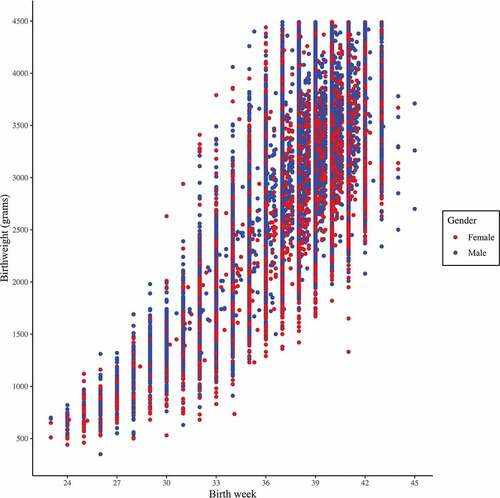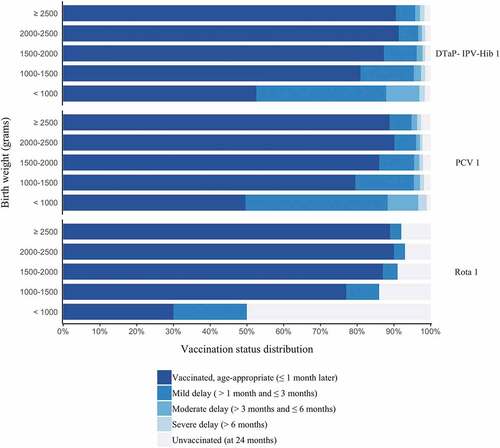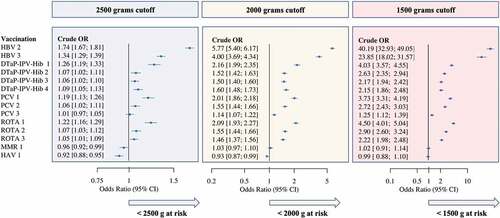Figures & data
Figure 1. Scatter plot for birth week and birthweight

Table 1. General characteristics of the 2016 birth cohort, Israel
Figure 2. Cumulative proportion of first dose of DTaP-IPV-Hib vaccine uptake by child’s age in days in NBW and LBW children born in 2016 and followed up to 24 months, Israel

Figure 3. Distribution of vaccination timing by defined categories (status at the age of 24 months) for selected vaccine doses, in children born in Israel, 2016

Figure 4. Forest plot presenting OR for risk of vaccination delay among NBW and LBW infants

Table 2. Multiple logistic regression model, dependent variable – DTaP-IPV-Hib 1 – age-appropriate vaccination status.a
